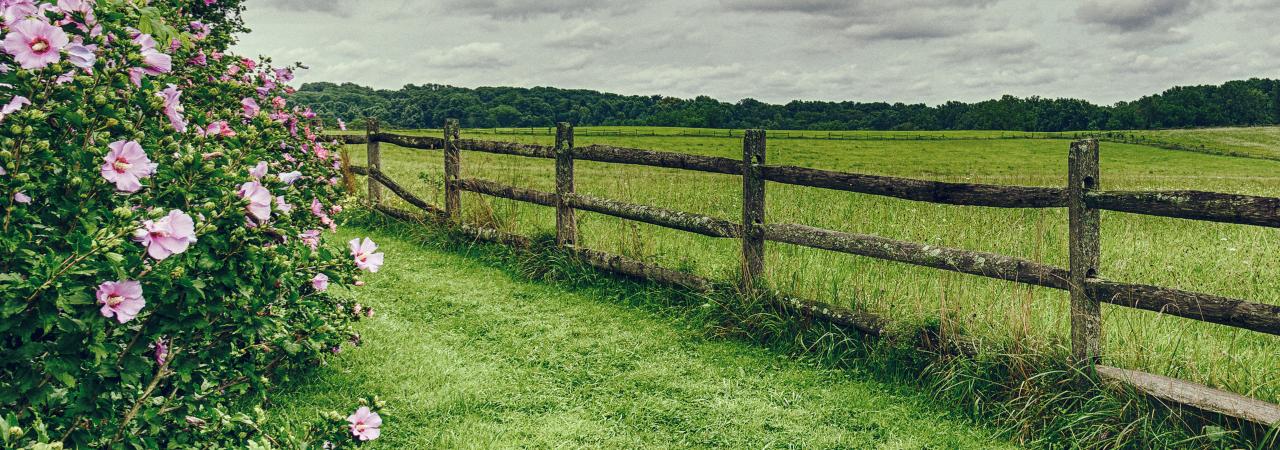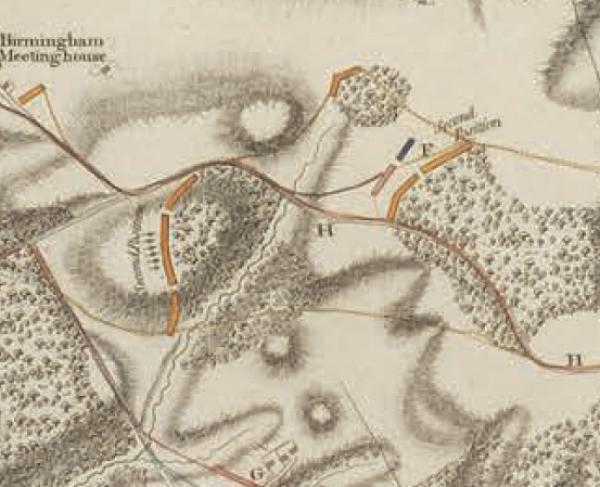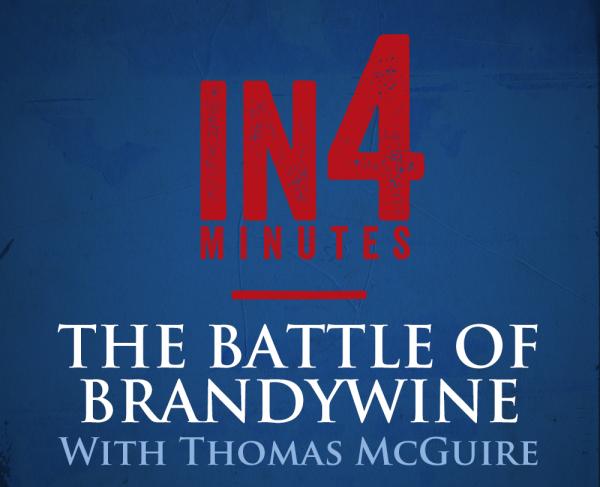
Saved: 105 Acres at Brandywine
105 acres protected at one of the Revolutionary War’s most important battlefields.
Thanks to our generous supporters and amazing partners, 105 acres of the Brandywine Battlefield north of Philadelphia are forever protected from development. The land you have helped save includes 21 acres combining a tract toward the battlefield’s north end and one southwest of the Birmingham Meetinghouse and Lafayette Monument, plus 84 acres on Osborne Hill.
The History
On September 11, 1777, the largest land battle of the American Revolution raged across Pennsylvania’s Brandywine River valley. General George Washington faced one of his fiercest foes in Britain’s General Sir William Howe, who was supported by General Lord Cornwallis.
The 11-hour conflict began early, when Washington’s Continental Army took up defensive positions along the banks of Brandywine Creek, determined to halt the advance of Howe’s army towards Philadelphia. Washington failed to reconnoiter all the places where Howe’s army might cross the Brandywine and believed his position was secure. The British were able to cross upstream and launch a devastating flank attack from Osborne Hill - 84 acres of which are now preserved thanks to your generosity.
The Land
The 105 acres we’ve preserved at Brandywine include land from two separate efforts: 84 acres at Osborne Hill to the south and 21 acres combining land toward the battlefield’s north end with a property southwest of the Birmingham Meetinghouse and Lafayette Monument.
The northern site was a staging area for British and Hessian troops, who filled the valley and took their midday meal before launching a fierce attack on Washington’s army. Quaker resident Joseph Townsend wrote of watching Lord Cornwallis from the front of the Strode House on Birmingham Road. Preserving this tract saves wetlands and provides opportunities to interpret the area’s Revolutionary-era civilian life along with the advance of Cornwallis’s column onto the battlefield.
From the heights of Osborne Hill, Generals Howe and Cornwallis watched the battle unfold and issued the attack orders that ended in a disastrous defeat of the American army. Further southeast, your generosity has preserved a 13-acre farm that was the Patriot soldiers’ first line of defense against Howe's advance.
Why It Matters
The National Park Service’s American Battlefields Protection Program has identified Brandywine as among the most intact, largely unprotected battlefields in the nation, meriting top priority for preservation. These hallowed grounds have the power to teach future generations about our great nation’s founding - but only if we preserve them now.
Thank you for your important contribution to our national legacy. We’re thrilled and humbled to be with you on this journey to save critical American history, acre by hallowed acre.
Ready to learn more about Brandywine?
See the battle summed up in four minutes, read a brief overview, or get into the weeds with an article about Major General Adam Stephen’s Division. Then watch our Animated Map of the Revolutionary War to see where this battle fit into the big picture of the War for Independence.
Thank you to our Partners
Preservation of the three new tracts was made possible by Natural Lands, a regional conservation nonprofit based in Media, Pa; the Brandywine Conservancy & Museum of Art; the National Park Service’s American Battlefield Protection Program; Chester County’s Preservation Partnership Program; East Bradford Township; the Mount Cuba Center; the Pennsylvania Department of Community and Economic Development; the Virginia Cretella Mars Foundation; and local landowners.

